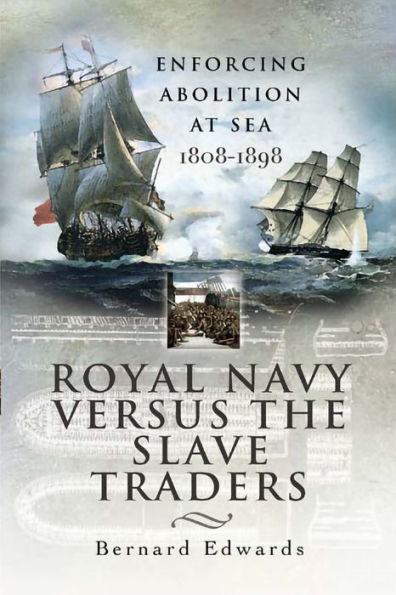The acclaimed naval historian sheds significant light on the Royal Navy's role in fighting the African slave trade through years of bitter battle at sea.
On March 16th, 1807, the British Parliament passed The Abolition of the Slave Trade Act. The following year, the Royal Navy's West African Squadron was formed for the purpose of stopping and searching ships at sea suspected of carrying enslaved people. But with typical thoroughness, the Royal Navy took the fight to the enemy, sailing boldly up uncharted rivers and creeks to attack the barracoon's where slave traders prepared their shipments.
For much of its long campaign against the evil of slavery, Britain's Navy fought alone and unrecognized. Its enemies were many and formidable. Ranged against it were the African chiefs, who sold their own people into slavery, and the slave ships of the rest of the world, heavily armed, and prepared to do battle to protect their right to traffic in so-called "black ivory."
1111577188
On March 16th, 1807, the British Parliament passed The Abolition of the Slave Trade Act. The following year, the Royal Navy's West African Squadron was formed for the purpose of stopping and searching ships at sea suspected of carrying enslaved people. But with typical thoroughness, the Royal Navy took the fight to the enemy, sailing boldly up uncharted rivers and creeks to attack the barracoon's where slave traders prepared their shipments.
For much of its long campaign against the evil of slavery, Britain's Navy fought alone and unrecognized. Its enemies were many and formidable. Ranged against it were the African chiefs, who sold their own people into slavery, and the slave ships of the rest of the world, heavily armed, and prepared to do battle to protect their right to traffic in so-called "black ivory."
Royal Navy Versus the Slave Traders: Enforcing Abolition at Sea, 1808-1898
The acclaimed naval historian sheds significant light on the Royal Navy's role in fighting the African slave trade through years of bitter battle at sea.
On March 16th, 1807, the British Parliament passed The Abolition of the Slave Trade Act. The following year, the Royal Navy's West African Squadron was formed for the purpose of stopping and searching ships at sea suspected of carrying enslaved people. But with typical thoroughness, the Royal Navy took the fight to the enemy, sailing boldly up uncharted rivers and creeks to attack the barracoon's where slave traders prepared their shipments.
For much of its long campaign against the evil of slavery, Britain's Navy fought alone and unrecognized. Its enemies were many and formidable. Ranged against it were the African chiefs, who sold their own people into slavery, and the slave ships of the rest of the world, heavily armed, and prepared to do battle to protect their right to traffic in so-called "black ivory."
On March 16th, 1807, the British Parliament passed The Abolition of the Slave Trade Act. The following year, the Royal Navy's West African Squadron was formed for the purpose of stopping and searching ships at sea suspected of carrying enslaved people. But with typical thoroughness, the Royal Navy took the fight to the enemy, sailing boldly up uncharted rivers and creeks to attack the barracoon's where slave traders prepared their shipments.
For much of its long campaign against the evil of slavery, Britain's Navy fought alone and unrecognized. Its enemies were many and formidable. Ranged against it were the African chiefs, who sold their own people into slavery, and the slave ships of the rest of the world, heavily armed, and prepared to do battle to protect their right to traffic in so-called "black ivory."
8.99
In Stock
5
1

Royal Navy Versus the Slave Traders: Enforcing Abolition at Sea, 1808-1898
224
Royal Navy Versus the Slave Traders: Enforcing Abolition at Sea, 1808-1898
224Related collections and offers
8.99
In Stock

Product Details
| ISBN-13: | 9781844689491 |
|---|---|
| Publisher: | Pen & Sword Maritime |
| Publication date: | 01/31/2020 |
| Sold by: | OPEN ROAD INTEGRATED - EBKS |
| Format: | eBook |
| Pages: | 224 |
| File size: | 3 MB |
About the Author
From the B&N Reads Blog
